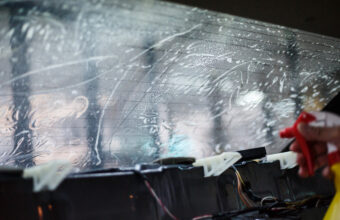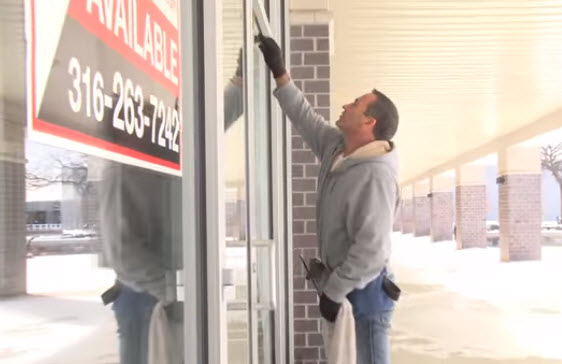Traditionally, window tint is applied to the interior side of glass windows in vehicles and buildings to provide UV protection, reduce heat, and enhance privacy. Situations arise where applying tint on the outside of the window becomes a consideration. While not the norm, understanding when and why exterior window tinting might be used, alongside its potential drawbacks, can help you make informed decisions for your specific needs.
The Case for Exterior Window Tinting
Specific Applications
- Inaccessibility – In some buildings, interior window surfaces may be difficult to access due to architectural features or interior design elements, making exterior application a practical alternative.
- Temporary Needs – For certain events or specific seasonal requirements, external window tint can provide a quick and temporary solution for reducing heat and glare.
Technological Advances
- Durable Films – Modern advancements in window film technology include options designed specifically for exterior application, featuring enhanced durability and resistance to weather conditions.
Concerns with Exterior Window Tinting
Durability and Lifespan
- Environmental Exposure – Tints applied externally are directly exposed to weather elements—sun, rain, wind, and debris—which can accelerate wear and tear, potentially reducing the film’s lifespan compared to interior tints.
- Maintenance – Exterior tints may require more frequent cleaning and maintenance to maintain their effectiveness and appearance due to direct exposure to dirt and environmental pollutants.
Installation and Aesthetics
- Installation Challenges – Applying tint on the exterior surfaces can be more challenging due to environmental factors like wind and dust, possibly affecting the installation quality.
- Visual Impact – The appearance of external window tint may differ from interior-applied tint, potentially impacting the aesthetic appeal and uniformity of window treatments, especially in residential or commercial buildings.
Effectiveness and Performance
- Heat Reduction – While exterior tints can effectively block UV rays and reduce heat, direct exposure to the sun might slightly lessen the effectiveness of certain tint materials over time.
- Protection Benefits – The protective benefits, such as reduced fading of interior furnishings and improved privacy, remain significant, though the exterior application might alter the performance dynamics slightly.
Best Practices for Exterior Window Tinting
- Professional Consultation – Discussing your needs with a professional window tinting service can provide insights into the best products and application methods for exterior tinting.
- Legal Compliance – Ensure that any exterior window tinting complies with local regulations and codes, especially for vehicle windows.
- Quality Materials – Opting for high-quality, weather-resistant window films designed for exterior use can maximize durability and effectiveness.
While applying tint to the outside of windows is less common and comes with certain challenges, specific scenarios, and modern film technologies can make it a viable option. Considering the durability concerns, aesthetic implications, and potential benefits, exterior window tinting should be approached with careful planning and professional assistance. Whether for temporary shading solutions or due to accessibility constraints, choosing the right materials and adhering to best practices can ensure that exterior window tinting meets your needs effectively.






